Forget everything you thought you knew about ancient legends. Some of the most famous mythical cities weren’t just fantasy—they were real places that vanished into history, only to be uncovered by modern explorers.
From the lost city of Atlantis to the opulent kingdoms of the Incas, these places were once thought to exist only in stories. But guess what?
They weren’t mere figments of imagination. Prepare for a journey that shatters the boundary between myth and reality, as we dive into 21 mythical cities that turned out to be absolutely real.
Who knew history could sound this thrilling?
Troy
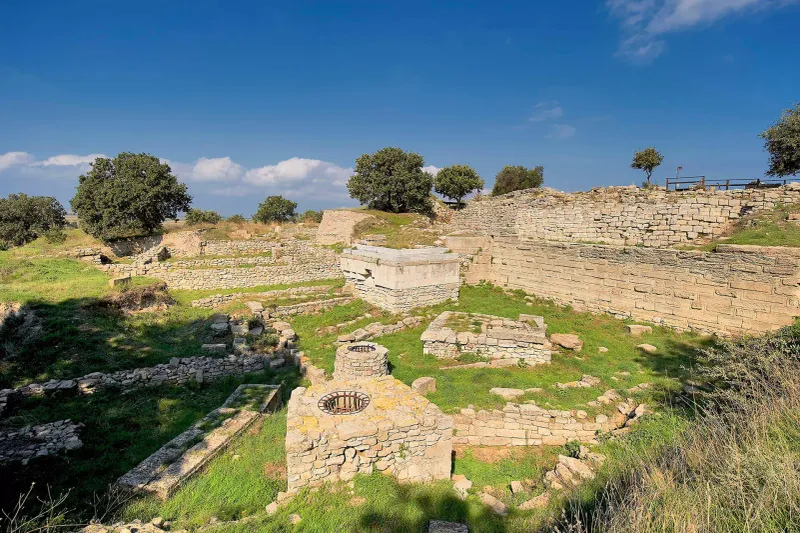
The city of Troy, immortalized in Homer’s epics, was dismissed as mere legend until Heinrich Schliemann unearthed its remains in the 19th century. Nestled in modern-day Turkey, Troy’s archaeological site reveals layers of history that span centuries.
The iconic wooden horse may remain a myth, but the city’s formidable walls and gates stand as testaments to its historical significance. Visitors can traverse the ruins, imagining the tales of Achilles and Hector echoing through time.
Today, Troy is a UNESCO World Heritage Site, providing a tangible connection to the Bronze Age and its epic stories.
Pompeii
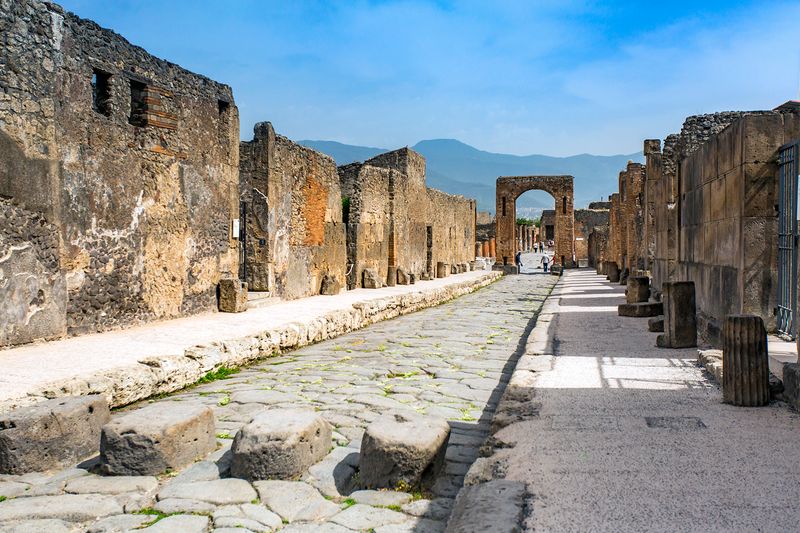
Frozen in time by the eruption of Mount Vesuvius in 79 AD, Pompeii offers a unique snapshot of ancient Roman life. The volcanic ash preserved buildings, artifacts, and even human forms in haunting detail.
Wandering through its streets, one can almost hear the bustling markets and lively conversations of a once-vibrant city. Excavations continue to reveal new insights into Roman society, architecture, and daily routines.
Pompeii’s legacy endures, drawing millions of visitors who seek to connect with its poignant history and the perils of nature’s fury.
Catalhoyuk
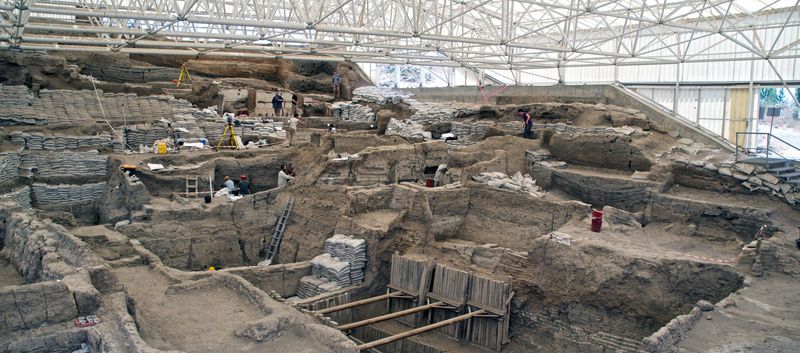
Nestled in the heart of modern-day Turkey, Catalhoyuk is a prehistoric city that was once thought to be mere legend. Discovered in the 1960s, this ancient metropolis dates back to around 7500 BCE.
Its tightly packed mud-brick houses reveal much about early urban life.
Catalhoyuk’s unique layout, with no streets, required residents to move across rooftops. This city provides invaluable insights into early human society, shedding light on social structures and daily life during the Neolithic era.
Archaeological efforts continue to unveil new aspects of Catalhoyuk, making it a focal point for understanding the evolution of human civilization. Its discovery has transformed our perception of ancient urbanization and social organization.
Machu Picchu
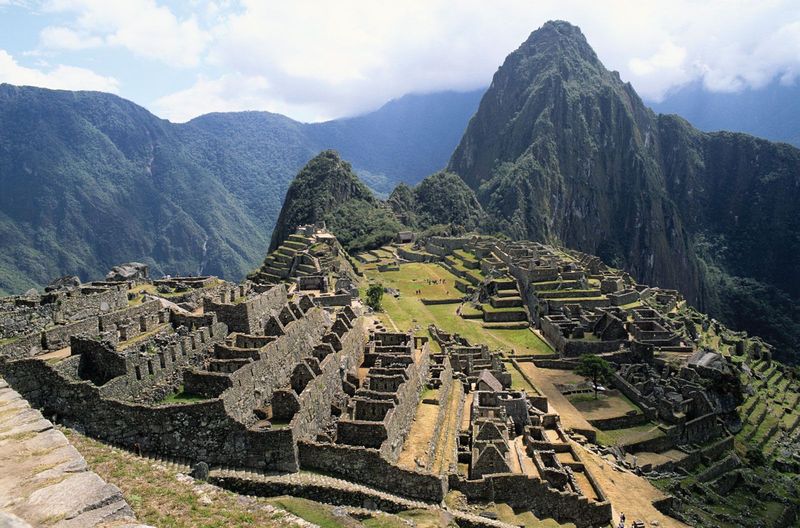
© Britannica
Perched high in the Andes, Machu Picchu was a marvel of Inca engineering and urban planning. Rediscovered by Hiram Bingham in 1911, this city in the clouds was initially shrouded in myth.
Its terraced fields, temples, and astronomical alignments showcase the Incas’ ingenuity and spiritual connection to the land. As the morning mist lifts, revealing the grandeur of the Sun Gate or Temple of the Sun, one can sense the echoes of an ancient civilization.
Machu Picchu remains a symbol of Peruvian heritage and a testament to the enduring mysteries of the Incas.
Petra
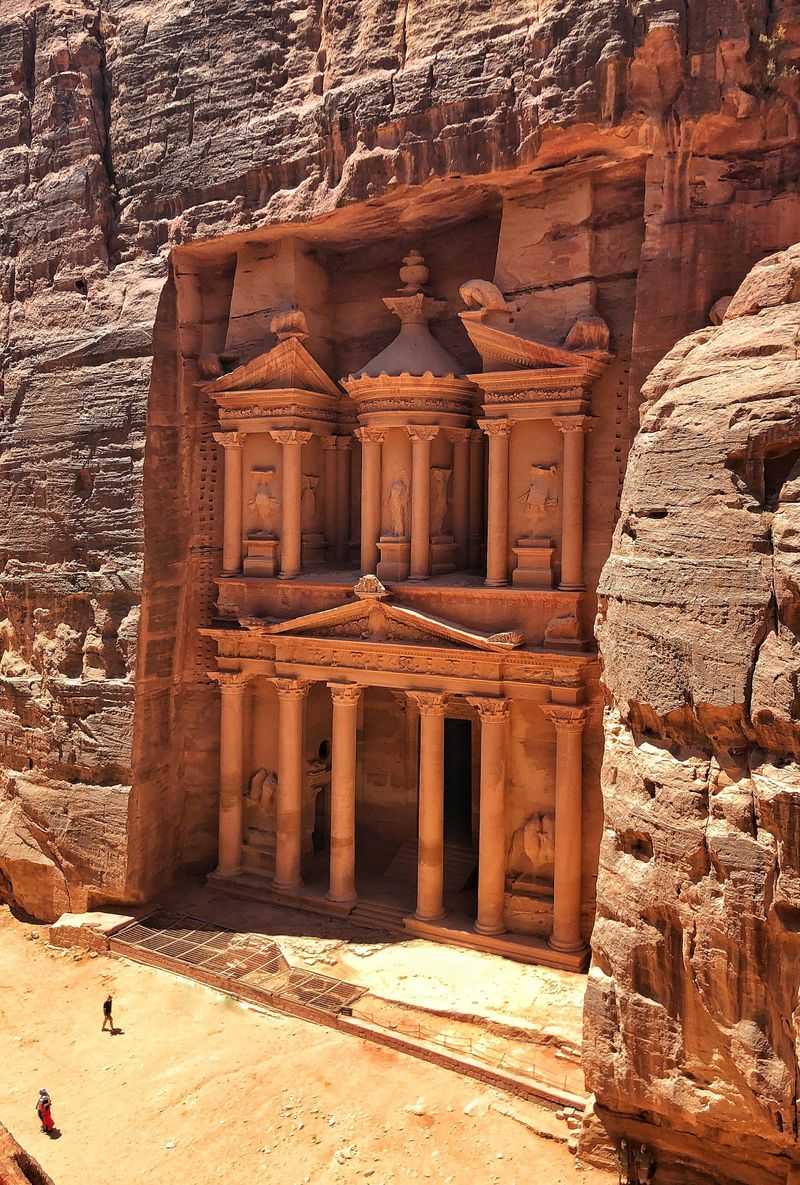
Hidden within Jordan’s desert mountains, Petra’s rose-red city was carved into cliffs by the Nabataeans more than two millennia ago. Dismissed as fantasy by early explorers, its rediscovery in 1812 unveiled an architectural masterpiece.
The iconic Treasury and Monastery reflect a rich fusion of Hellenistic and Eastern influences. A walk through the Siq, a narrow gorge leading to Petra, reveals a city designed to awe.
Today, Petra stands as a symbol of resilience and cultural exchange, preserving the legacy of a civilization that thrived on trade and innovation.
Ubar
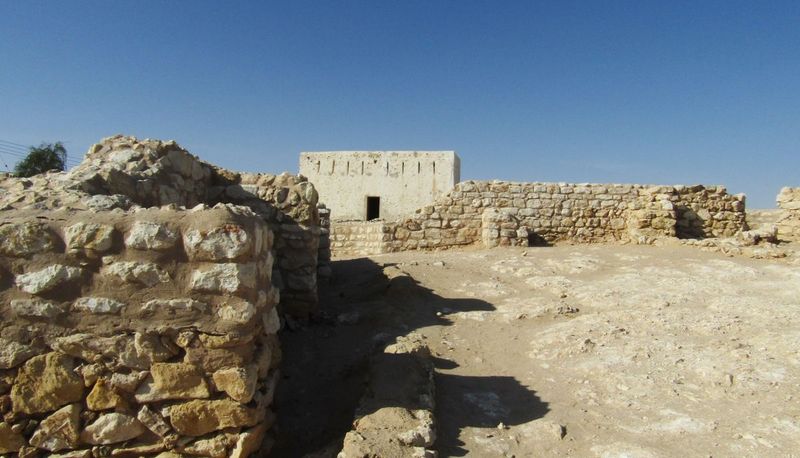
Once dubbed the ‘Atlantis of the Sands,’ Ubar was considered a lost city of immense wealth and mystery. Located in the Arabian Peninsula, its existence was confirmed by satellite imagery and archaeological efforts in the 1990s.
Ubar’s discovery revealed a city that thrived on the incense trade, acting as a critical link between ancient civilizations. Its impressive fortifications and strategic location underscore its historical importance.
The city likely met its demise due to the collapse of subterranean water reserves, leading to its burial under shifting sands. Today, Ubar stands as a testament to human resilience and the inexorable passage of time.
Aleppo
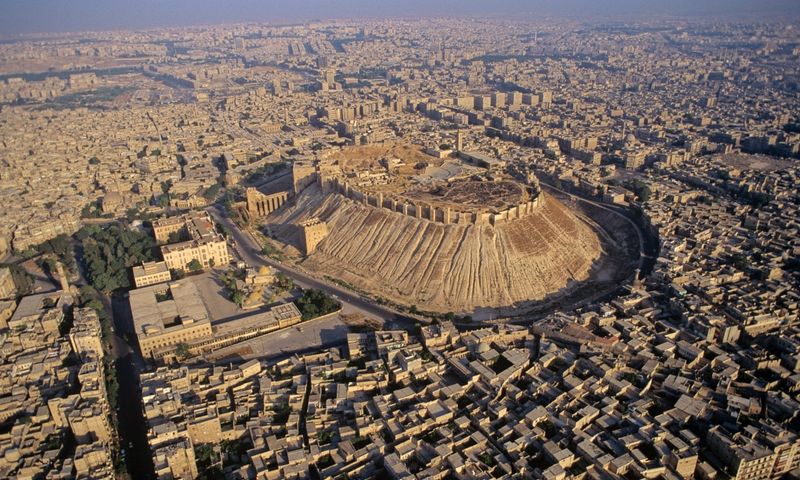
Aleppo, one of the oldest continuously inhabited cities in the world, was steeped in legend long before its historical roots were confirmed. Situated in modern-day Syria, its history spans millennia, reflecting its strategic and cultural importance.
The city is renowned for its ancient Citadel, bustling souks, and diverse architectural heritage. Over centuries, Aleppo has been a melting pot of civilizations, each leaving its mark on the cityscape.
Despite modern challenges, Aleppo’s historical significance remains undiminished, reminding us of the resilience and continuity of human settlement. Its rediscovery and preservation continue to be a focal point for historians and archaeologists alike.
Great Zimbabwe
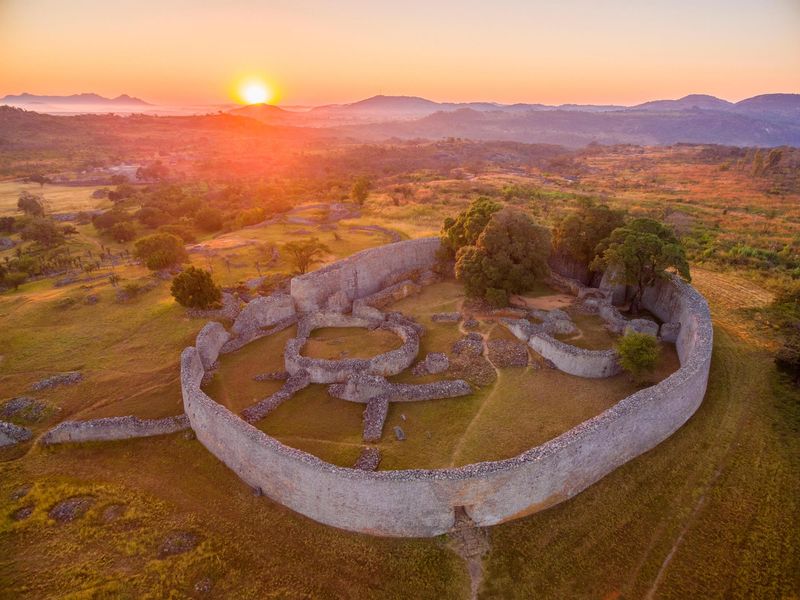
© National Geographic Education – National Geographic Society
The stone city of Great Zimbabwe, once thought to be the work of foreign builders, stands as a testament to the ingenuity of the Shona civilization. Located in modern-day Zimbabwe, its impressive stone structures reflect advanced architectural and societal skills.
Archaeological evidence points to a thriving trade network that connected the city with distant lands. The Great Enclosure and its conical towers evoke wonder and curiosity about the lives of its inhabitants.
This historical revelation challenges previous misconceptions and celebrates African heritage, underscoring the continent’s rich and diverse history.
Tikal
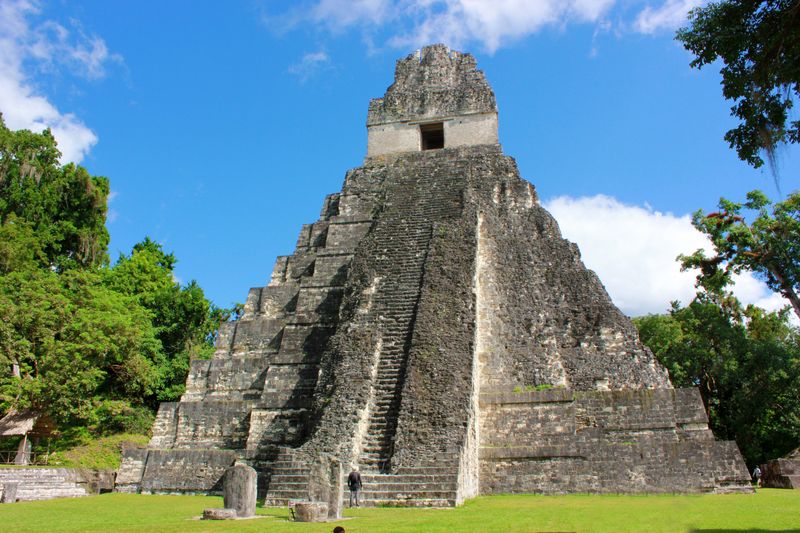
In the heart of the Guatemalan rainforest, Tikal emerges from the canopy as a symbol of Mayan prowess. For years, its existence was obscured by dense vegetation, leading some to doubt its reality.
Excavations have revealed a city of monumental pyramids, palaces, and temples that rival those of ancient Egypt. Tikal’s rediscovery has provided invaluable insights into Mayan culture, astronomy, and governance.
Walking through its plazas, one can envision the vibrant ceremonies and bustling activities of a once-thriving metropolis. Tikal stands as a testament to the Mayans’ architectural and scientific achievements.
Angkor
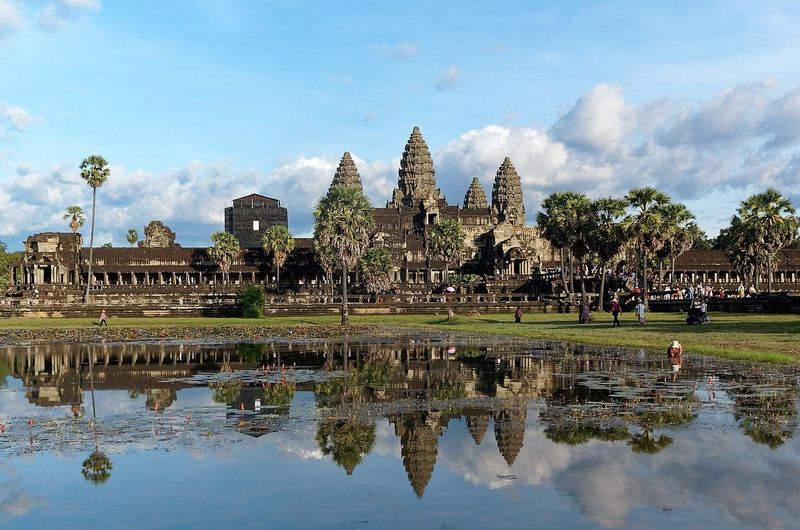
Hidden for centuries in Cambodia’s jungles, Angkor was the heart of the Khmer Empire. Its most famous temple, Angkor Wat, is an architectural marvel of religious devotion and cosmic symbolism.
Rediscovered by Western explorers in the 19th century, Angkor’s vast complex reveals a sophisticated urban planning system and water management. The bas-reliefs and sculptures tell stories of gods and kings, offering a glimpse into the spiritual and political life of the Khmer.
Today, Angkor continues to inspire awe, attracting those who seek to connect with its majestic past and the whispers of its ancient inhabitants.
Knossos
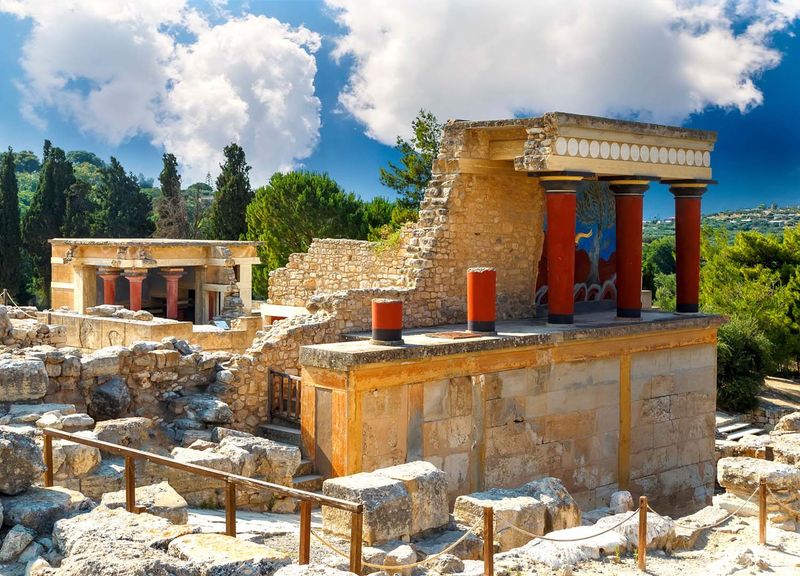
The palace of Knossos, central to the Minoan civilization on Crete, was long considered the stuff of legend. Fabled as the home of King Minos and the Minotaur’s labyrinth, its discovery by Sir Arthur Evans in the early 20th century brought myth to life.
The site showcases intricate frescoes, advanced plumbing systems, and storied halls. These discoveries offer insights into Minoan society and the Greek myths that grew from it.
Knossos’s ruins remain a vivid reminder of a culture that influenced the Greek world, weaving together strands of history and myth.
Hattusa
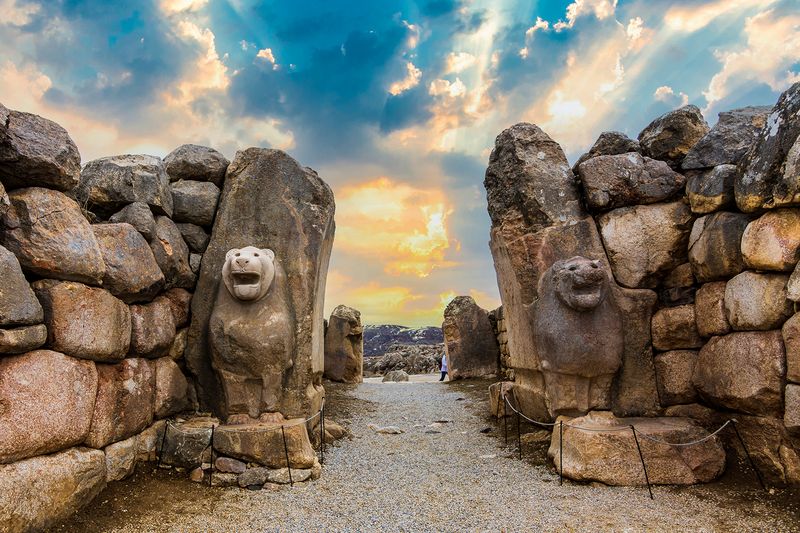
Once the thriving capital of the Hittite Empire, Hattusa was shrouded in mystery until excavations in the early 20th century brought its secrets to light. Located in modern Turkey, the site reveals massive fortifications, royal archives, and religious temples.
The discovery of cuneiform tablets has provided a wealth of knowledge about Hittite laws, treaties, and daily life. Walking through Hattusa, one can almost feel the presence of its ancient kings and the bustling activity of a powerful empire.
The site now stands as a testament to the Hittites’ historical significance and cultural legacy.
Carthage
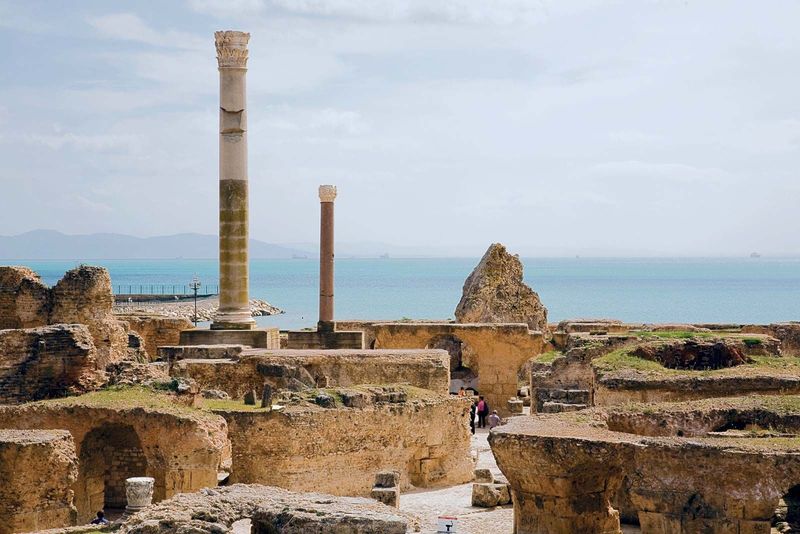
The ancient city of Carthage, once Rome’s fierce rival, was thought to be lost forever when it was destroyed in 146 BC. However, modern excavations in Tunisia have unearthed its remains, revealing a city of rich history and cultural fusion.
The Punic and Roman ruins, including the famous double harbor and Byrsa Hill, offer a glimpse into Carthaginian life and its maritime prowess. Carthage’s story of resilience and rebirth continues to captivate, serving as a reminder of the complex interplay of power and culture in the ancient Mediterranean world.
Mycenae
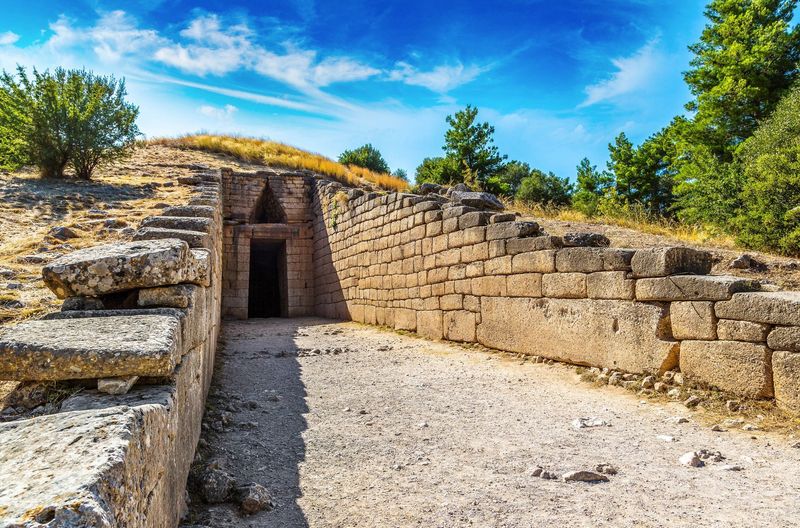
In the heart of the Peloponnese, Mycenae was the seat of a powerful Bronze Age civilization. Excavated by Heinrich Schliemann in the 19th century, the city was long shrouded in Homeric legend.
The excavation revealed the iconic Lion Gate, royal tombs, and a wealth of artifacts, shedding light on the Mycenaean’s sophisticated society. These findings provided a historical basis for the tales of Agamemnon and the Trojan War.
Mycenae’s ruins, steeped in myth and history, continue to intrigue, offering a window into Greece’s ancient past and the epic stories that have shaped its cultural identity.
Palmyra
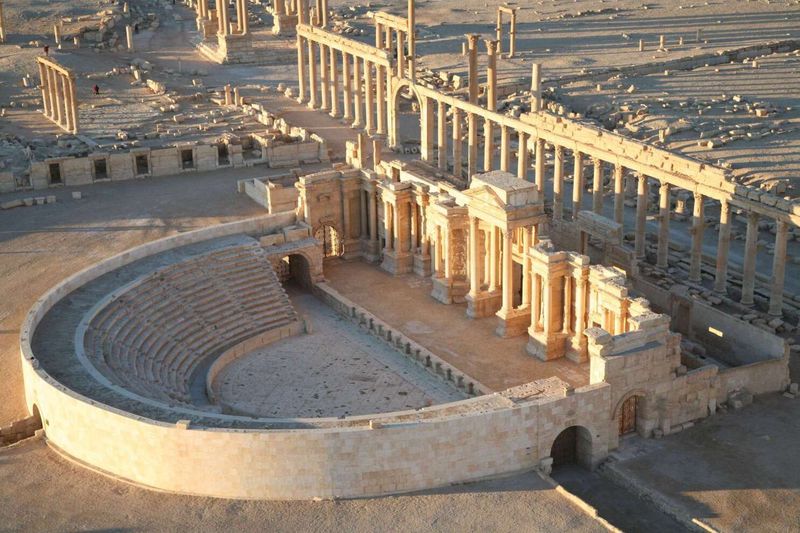
An oasis in the Syrian desert, Palmyra was a cultural crossroads of the ancient world, flourishing as a trade hub on the Silk Road. Its monumental architecture, including grand colonnades and temples, reflects a blend of Greco-Roman, Persian, and local influences.
Rediscovered in the 17th century, Palmyra’s ruins tell stories of a city that once dazzled with wealth and diversity. Despite recent conflicts, efforts to preserve and restore its heritage continue, underscoring Palmyra’s enduring importance as a symbol of cultural dialogue and resilience in the face of adversity.
Babylon
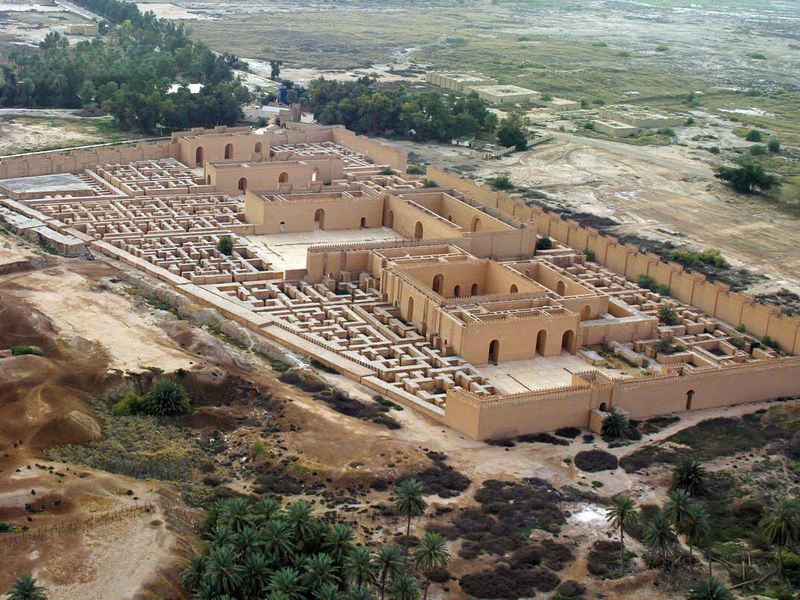
The legendary city of Babylon, thought to be a mere biblical tale, once thrived on the Euphrates’ banks. Excavations in Iraq unearthed its majestic Ishtar Gate, hanging gardens, and ziggurats, revealing a city of monumental scale and influence.
As a center of learning and culture, Babylon’s legacy endures in our understanding of ancient Mesopotamian civilization. Its rediscovery offered scholars an invaluable glimpse into the city’s grandeur and complexity, shaping our perception of history.
Babylon’s story continues to resonate, inviting reflection on the cyclical nature of civilizations and their enduring impact.
Leptis Magna
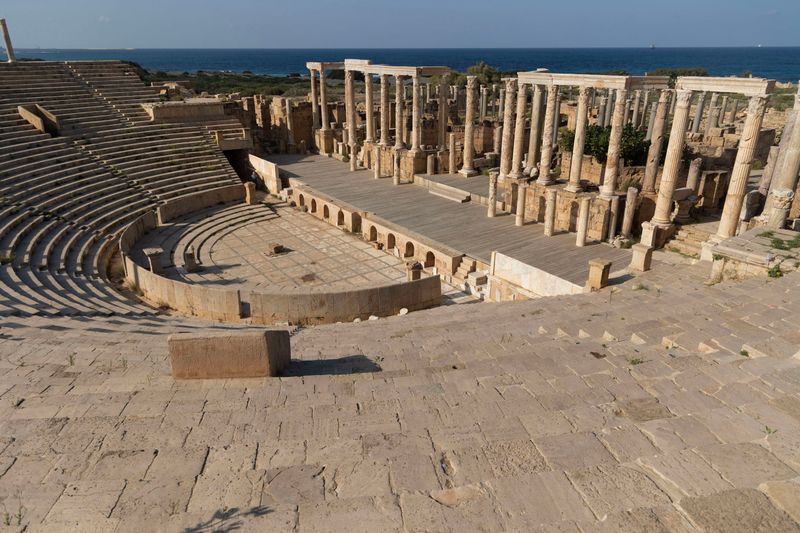
Leptis Magna, once a thriving Roman city on Libya’s coast, was buried by shifting sands until rediscovered by European explorers. Its stunning architecture, including the Arch of Septimius Severus and a well-preserved amphitheater, showcases the city’s prosperity and Roman grandeur.
Excavations revealed intricate mosaics and bustling marketplaces that paint a vivid picture of ancient urban life. Today, Leptis Magna stands as one of the most impressive Roman sites outside Italy, offering a glimpse into the empire’s reach and the enduring allure of its architectural legacy.
Timbuktu
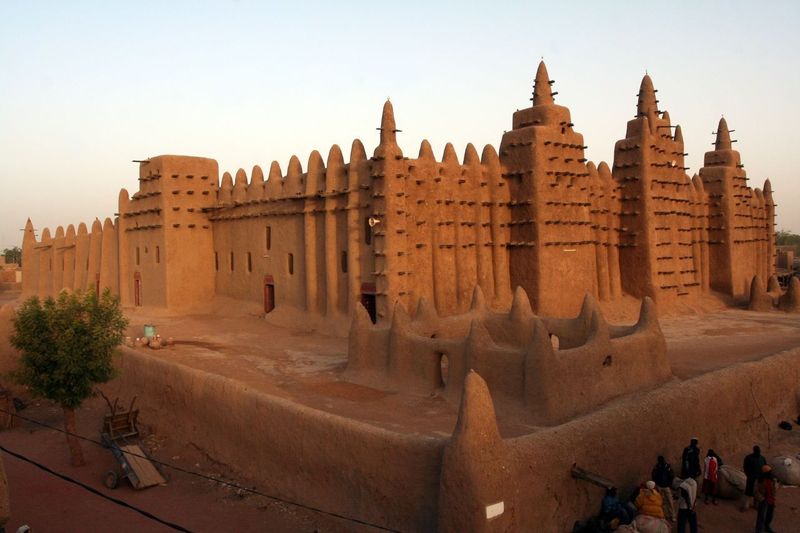
Renowned as a center of learning and trade, Timbuktu’s legendary status in Mali was once thought exaggerated. Rediscoveries of ancient manuscripts and mosques reveal its historical significance as a hub of Islamic scholarship.
The city’s golden age saw scholars and traders from across Africa and the Middle East converge, creating a vibrant cultural tapestry. Timbuktu’s story challenges perceptions, highlighting the intellectual and spiritual richness of West Africa.
Despite modern challenges, efforts to preserve its heritage continue, reflecting the enduring value of knowledge and cultural exchange.
Sigiriya

Rising dramatically from the central plains of Sri Lanka, Sigiriya’s Lion Rock was once believed to be a mythical palace in the sky. Its revelation as an ancient fortress and royal residence unveils a site of incredible artistry and engineering.
The frescoes and landscaped gardens reflect a sophisticated civilization steeped in Buddhist culture. Sigiriya’s legacy as a UNESCO World Heritage Site continues to captivate visitors with its breathtaking views and the mysteries of its past.
The rock fortress stands as a testament to the ingenuity and artistic vision of ancient Sri Lankan rulers.
Teotihuacan

The vast city of Teotihuacan, once hidden beneath centuries of dust, emerged as an architectural wonder in central Mexico. Its pyramids, particularly the Pyramid of the Sun, stand as testaments to the city’s grandeur and mystery.
Archaeological findings reveal a complex society with a rich cultural and religious life. The city’s layout and artistry continue to fascinate, offering insights into its influential role in Mesoamerican history.
As one walks down the Avenue of the Dead, the echoes of its past linger, challenging us to ponder the rise and fall of ancient civilizations.
Nan Madol
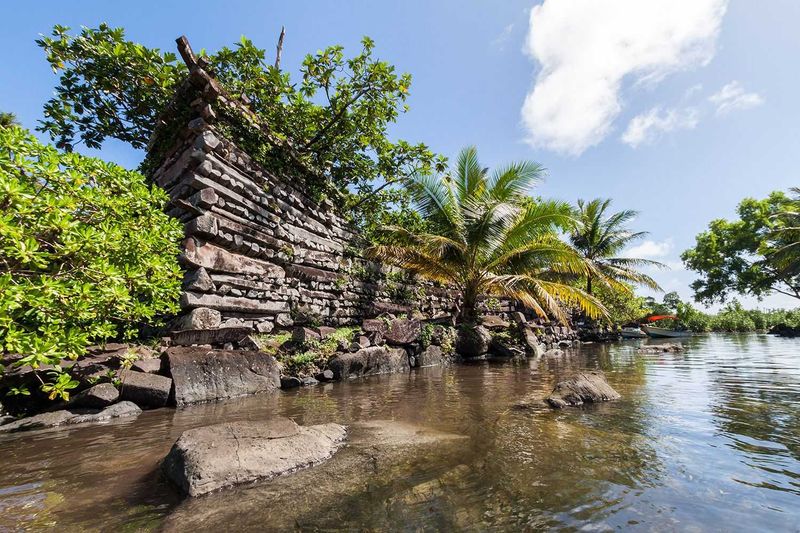
The mysterious city of Nan Madol, built on a lagoon in Micronesia, was long considered a legend due to its remote location. Rediscovery revealed a series of artificial islets and structures constructed with massive basalt stones.
Its architecture demonstrates advanced engineering and societal organization, suggesting a powerful ruling class. The city’s purpose remains debated, shrouded in local lore and mystery.
Nan Madol’s ruins invite reflection on human ingenuity and the cultural narratives that shape our understanding of history. Its enigmatic allure continues to draw intrigue from historians and travelers alike.
